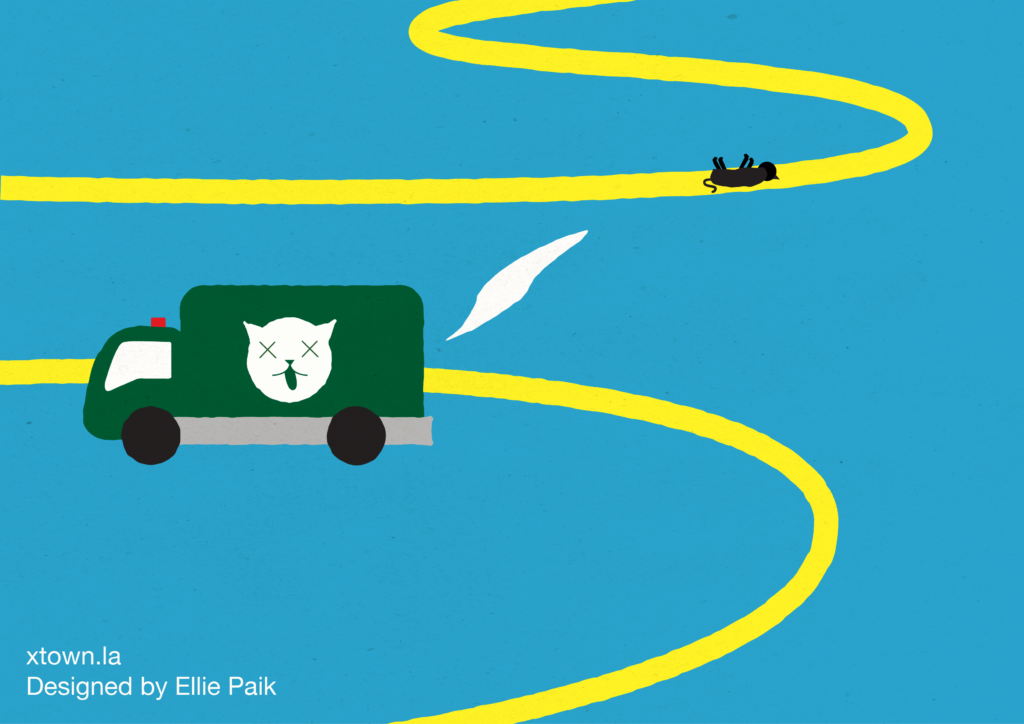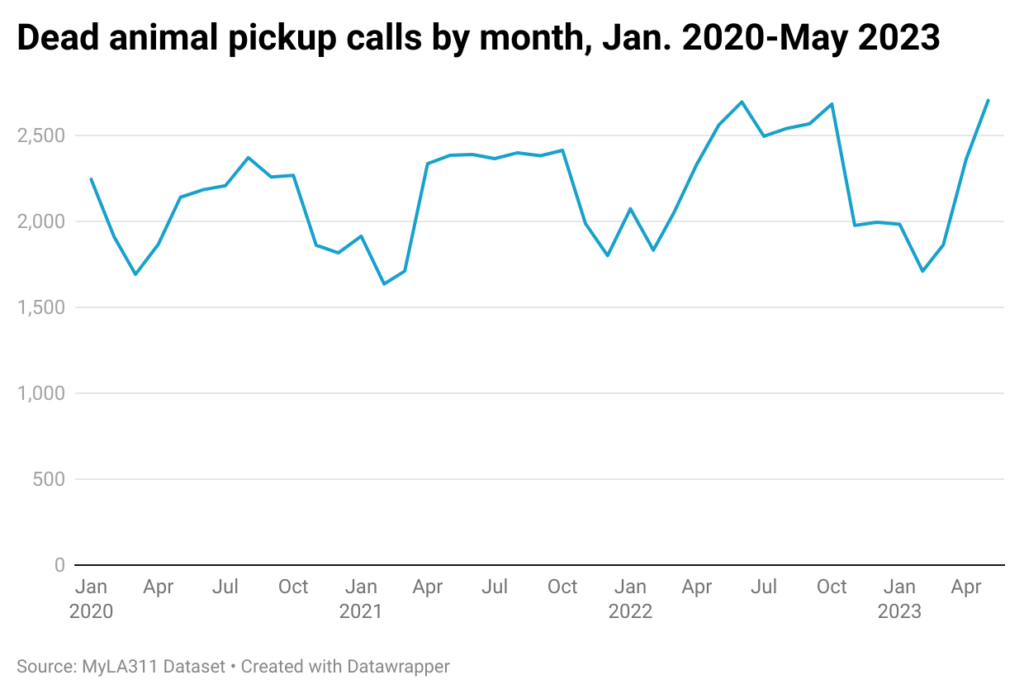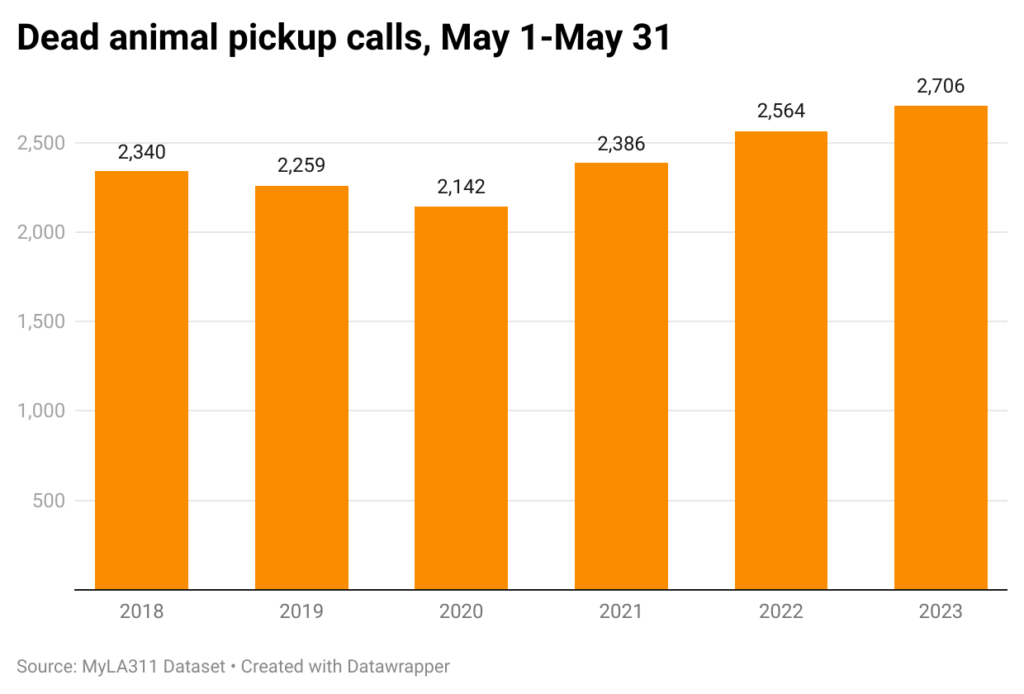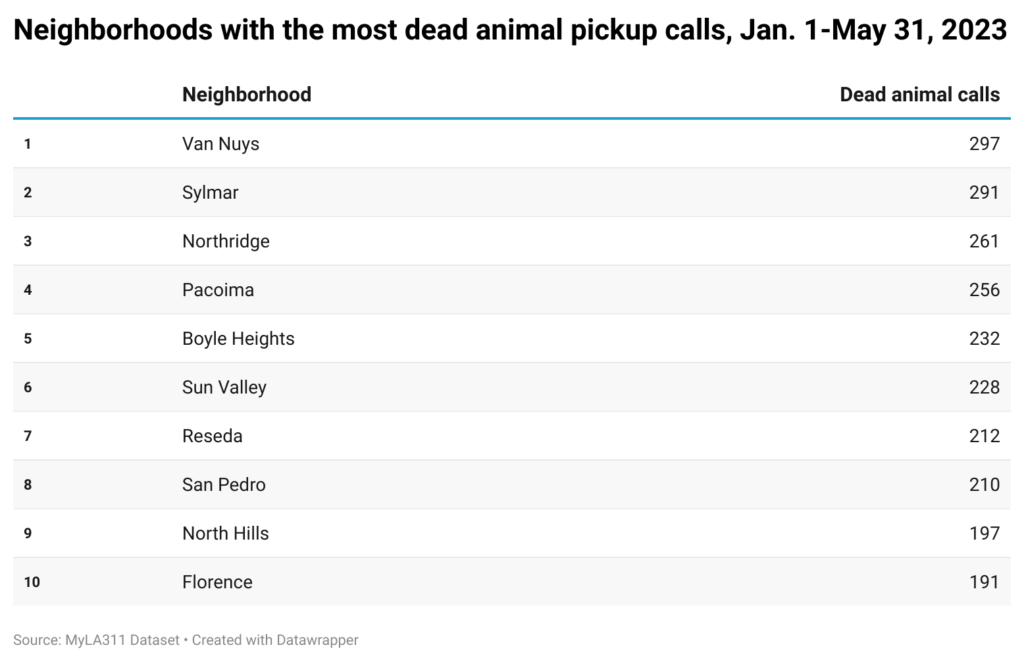Dead animal removal calls could be rising this year

Every spring, warming temperatures lure Angelenos from their homes. But the season also brings something largely overlooked and disconcerting: a rise in calls for dead animal pick-up.
Spring and summer months are referred to as “kitten season” in animal care circles. During this time, cats, dogs and other animals—many feral—mate and have litters. While a number are found by good Samaritans and are brought to shelters, others are left to fend for themselves in the wild. Some, particularly after leaving their mother, became targets for predators. Others get hit by cars.
Brittany Thorn, executive director of the Best Friends Animal Society L.A., an animal protection and adoption network, said California typically sees a long kitten season because of warm weather that extends into the fall. That is reflected in dead animal pick-up calls made to the city of Los Angeles’ MyLA311 system.
[Get crime, housing and other stats about where you live with the Crosstown Neighborhood Newsletter]
Each year they tend to follow a pattern. Dead animal removal requests—whether by phone, website or the MyLA311 app—are lowest in the winter. They spike around April and May, and remain elevated until October, according to publicly available MyLA311 data.

From Jan. 1–May 31 of this year, the city received 10,628 dead animal pick-up calls. Although that is a 2.5% decrease from the same period last year, there are already indications that this year could bring more misfortune.
In May, there were 2,706 MyLA311 calls about dead animals. That is the highest monthly total since at least 2016. It also is 5.5% over the total last May, and is up 19.8% from May 2019.

Push for spay and neuter
The city collects all dead animals, except cows and horses, for free. Some calls are to take away beloved pets that passed away. Other requests are for the removal of dogs, cats, possums, raccoons, rabbits or additional animals struck by cars or that died in a different manner.
Dead animal calls to MyLA311 reached a record-high last year. The 27,828 requests represented an 8.1% increase over the call volume in 2021.
A lack of spay and neuter resources for stray and roaming animals has led to litters being born at an “alarming rate,” Thorn said. That results in higher stray animal populations, which in turn means more animals killed by vehicles.
There are efforts to change the status quo. In addition to persistent requests for residents to spay and neuter their own pets, the city Department of Animal Services in February 2022 began implementing the Citywide Cat Program. It involves encouraging Angelenos to trap what it calls “community cats”—basically any feral feline—which city veterinarians will then spay or neuter. Afterwards, the cat is returned to the wild. The department has videos in English and Spanish on how to trap cats.
Animals die in every neighborhood, but communities in the San Fernando Valley tend to see more deaths than other areas. That comes from housing that is less dense, along with an abundance of open spaces, wilderness areas and through-roads that can endanger wild animals.
From Jan. 1–May 31, there were 297 calls for dead animal pickup in Van Nuys, more than any other neighborhood in the city. The next highest count was the 291 in Sylmar.

One potential factor contributing to rising numbers this year is housing insecurity. Although many renter protections remain in place even after the pandemic, some people are unaware of their rights. If people lose their home, they may be forced to another residence that doesn’t allow animals, or even become homeless. Pets that can no longer be cared for are often either dropped off at overwhelmed shelters, or left to wander L.A.’s streets and potentially enter harm’s way.
Su Roos of the L.A. Animal Rescue, which works to help abandoned and other animals get adopted, said the organization can’t keep up with the number of pets being surrendered because owners can’t provide for them anymore.
“The ‘accidental litters’ and people dumping their dogs that need medical care that they say they can’t afford—it’s a mess,” Roos said in an email to Crosstown.
How we did it: We examined publicly available MyLA311 service data from Jan. 1, 2017–May 31, 2023. For neighborhood boundaries, we rely on the borders defined by the Los Angeles Times. Learn more about our data here.
Want to know how your neighborhood fares? Or simply just interested in our data? Email us at askus@xtown.la.






